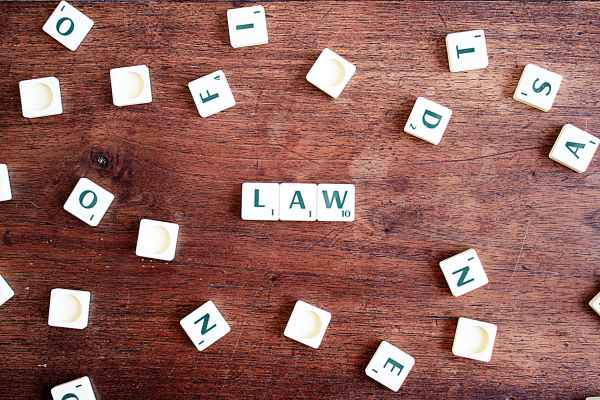In legal terms, defamation is the attack on another's reputation by a false publication (communication to a third party) that serves to discredit the individual. Its variety is only constrained by human creativity. Although the concept of defamation originated in English law, it predates that by several thousand years. Defamation typically requires that the publishing... Continue Reading →
Group Rights Indigenous People .
Abstract: 1. Indigenous people 2. Indigenous rights 3. Protection under law for Indigenous Group 4. Rights of Indigenous People in India Article: Indigenous people: Indigenous peoples, also referred to as First peoples, First nations, Aboriginal peoples, Native peoples, Indigenous natives, or Autochthonous peoples (these terms are often capitalized when referring to specific indigenous peoples as ethnic groups, nations, and the members of these... Continue Reading →
WHAT IS LIBEL
HISTORICAL ORIGIN The historical origins of Defamation Laws can be traced back to Lord Macaulay who conceived the law in 1837. In 1860, the statute was later codified. The English law served as a model for defamation laws, continuing a trend that can be seen throughout colonial history. Additionally, these laws were created to defend... Continue Reading →
Relationship between rights and duties
What do you mean by Rights? Legal Rights - These are the privileges that the people have under the law of the land.[1] "A right or an interest recognised and protected by a rule of right," according to Salmond. It is a right, whose observance is a duty and whose violation is unlawful. In a... Continue Reading →
OUTRAGING THE MODESTY OF A WOMEN
The number of sexual offences committed against women has rapidly risen in recent years. Offenses against women are becoming more and more prevalent. Women have suffered both physical and mental pain as a result of this, which has cost their lives. Outraging the Modesty of a Woman is one such crime committed against women that... Continue Reading →
WHAT IS DEFAMATION
According to the law, defamation is the act of harming another's reputation by a false publication (communication to a third party) that has the potential to bring them into disrepute. The concept is elusive, and only human creativity can create all the different variations. Defamation is an English legal invention, but similar concepts have existed... Continue Reading →
CRIMINAL INTIMIDATION
MEANING The Indian Penal Code, 1860, sets forth the rules that regulate criminal activity in India. It is a substantive piece of legislation that lists all criminal offences and imposes punishment on offenders who violate it. One of these offences covered by Chapter XII of the Indian Penal Code is criminal intimidation. Intimidation is defined... Continue Reading →
LEGAL STATUS OF A MINOR IN INDIA
WHO IS A MINOR? According to Section 3 of the Indian Majority Act of 1875, a "minor" is someone who has not reached the legal age of majority to which they are subject. The legal minimum age varies depending on the country's legal system. Minors do not possess the same level of legal ability that... Continue Reading →
DIVORCE FOR ADULTERY
Families and marriage are frequently seen as the cornerstones of civilization. As long as there have been marriages, adultery has been among humans. It brings tremendous emotions to the forefront and has repercussions for everyone involved. It naturally creates friction between the parties involved, as well as between their sexual impulses and allegiance. Adultery is... Continue Reading →
WHAT IS CRUELTY?
Before 1955, getting a divorce as a Hindu was not always simple. Because the marriage was seen as a religious union in Hinduism. The parliament resolved to create laws pertaining to the Hindu in light of different stigmas in social life of the Hindu. However, doing so was a challenging undertaking. The lawful marriage between... Continue Reading →
CRIMINAL LIABILITY -STRICT LIABILITY
Strict obligation crimes are those in which the respondent is held obligated for a criminal offense he committed, even in case mens rea is missing. In spite of the fact that the litigant did not expect any hurt by his activities and was totally unconscious that he was committing an illicit act, the convention of strict obligation holds him obligated for the criminal offenses committed. Because of the regard for due handle within the United States, the tremendous majority of strict obligation wrongdoings are less genuine offenses. Most cases of strict obligation are minor infractions and misdemeanors, not about as genuine as felonies, but still justifying overwhelming fines and up... Continue Reading →
ATTEMPT TO COMMIT OFFENCES
►Definition of attempt. An attempt is an intentional preparatory action which fails in the object, which so fails through circumstances independent of the person who seeks its accomplishment. Attempt begins when preparation ends. It is interesting to note that it is nowhere defined in IPC but provides its punishment under section 511 of IPC. ►why... Continue Reading →
EXECUTIVE POWERS
ARTICLE 53 OF THE INDIAN CONSTITUTION The Executive Powers of the Union are stated in Article 53 of the Indian Constitution. Clause [1] of the Article 53 defines that the executive power of the union shall be conferred with the President and shall be implemented by him either directly or through his officers in obedience... Continue Reading →
ENVIRONMENT REGULATIONS
“If all mankind were to disappear, the world would regenerate back to the rich state of equilibrium that existed ten thousand years ago. If insects were to vanish, the environment would collapse into chaos.”~ E. O. Wilson INTRODUCTION In the contemporary scenario when the havoc of environmental degradation is at new heights, the need for effective... Continue Reading →
SALIENT FEATURES OF THE 14TH AMENDMENT OF THE INDIAN CONSTITUTION[1]

In brief, the main feature of the 14th Amendment was to incorporate Pondicherry into the Indian Union History- In the year 1962 on the date of 16th of August, India and France exchanged ratification instruments by which France relinquished full sovereignty over the regions it controlled to India.In the year 1963 on the date 01st... Continue Reading →
What is Copyright?
Section 14[1] of the Copyright Act 1957 defines Copyright as the branch of law that deals with the rights of intellectual creators. “The exclusive right given by law for a certain term of years to an author, composer, etc. (or his assignee) to print, publish and sell copies of his original work”[2] It deals with... Continue Reading →
AUTHORS UNDER COPYRIGHT ACT
The author of a work shall be the original owner of the copyright, as stated in Section 17[1] of the Copyright Act, 1957. According to the Act, "Author" refers to the following: The author of a literary or dramatic work;The composer of a musical work;The artist of a work of art other than a photograph;The... Continue Reading →
WHY SHOULD COPYRIGHT BE PROTECTED?
It's vital to remember that copyright protects how an idea is conveyed, not the concept itself, such as if it's committed to paper or another medium. What exactly makes copyright protection so crucial? Sure, but why should you be concerned if it happens on its own? While your work is automatically protected, this does not guarantee... Continue Reading →
SALIENT FEATURE OF THE 15TH AMENDMENT OF THE INDIAN CONSTITUTION
In Brief- Enabled the High Court to issue writs to any person or authority, even if the cause of action occurs outside its territorial limitations if the cause of action occurs inside its geographical limits.Raised the age of retirement for high court judges from 60 to 62 years old.Enabled the appointment of retired high court... Continue Reading →
Sexual harassment of women in the workplace
As more and more women began to enter the workforce in an emerging Indian economy, the malady of sexual harassment began to manifest itself in a variety of fields. From the police and the army to multinational corporations and sports, it is regrettable that no field of human endeavor has been left unaffected by this tragedy. A legislative solution that could protect the rights of these working women was urgently required. As has been the case with many laws, it was judicial activism that brought this one to the attention of the public for the first time. What Do you Understand by Sexual Harassment in the workplace? The Sexual Harassment of Women at Workplace (Prevention, Prohibition, and Redressal) Act of 2013 was passed to combat sexual harassment of women at work. It defined sexual harassment, outlined the procedures for filing a complaint and conducting an investigation, as well as the actions that would be taken. It widened the scope of the Vishaka guidelines, which had already been established. The Supreme Court of India issued a judgment in 1997 that established the Vishaka guidelines. This was in the context... Continue Reading →







